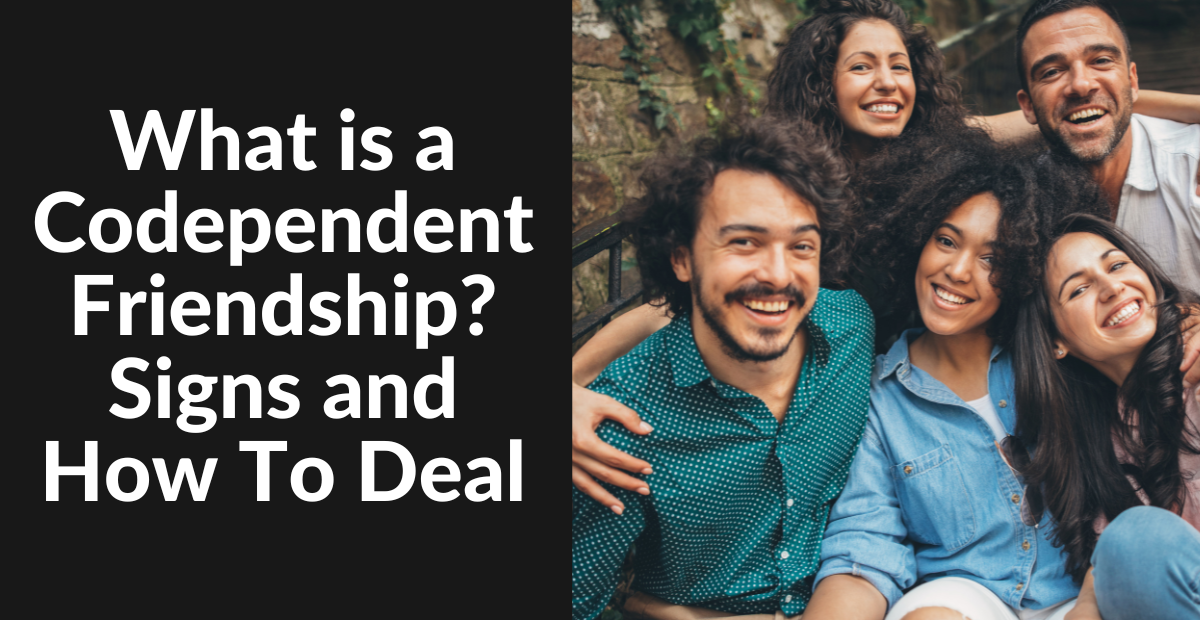Friendships are an essential part of our lives, offering support, companionship, and shared experiences. However, not all friendships are healthy and balanced. In some cases, friendships can become codependent, which can be detrimental to the well-being of both individuals involved.
This article delves into the concept of codependency in friendships, exploring what it means to have a codependent friendship, identifying signs and examples, discussing codependent versus interdependent friendships, and shedding light on codependent female friendships.
What is a Codependent Friendship?
A codependent friendship refers to a relationship in which one or both individuals rely excessively on each other for emotional support, validation, and a sense of self-worth. Codependent friendships often involve one person taking on a caretaking or enabling role while the other person assumes a dependent or needy position. These dynamics can lead to an unhealthy cycle of enabling and neediness, resulting in emotional imbalance and an inability to function independently.
In a codependent friendship, boundaries are blurred, and the individuals involved become overly intertwined in each other’s lives. They may struggle to assert their own needs and desires, often prioritizing the needs of their friend above their own. This can create an unhealthy power dynamic, with one person consistently taking on the role of the giver while the other plays the perpetual receiver.
Signs of a Codependent Friendship

Recognizing the signs of a codependent friendship is crucial for understanding and addressing the issue. Here are some common indicators:
- Excessive Emotional Reliance: Friends in a codependent relationship may rely heavily on each other for emotional support, often seeking validation and reassurance on a regular basis.
- Lack of Boundaries: Boundaries between individuals become blurry, with little distinction between personal space, time, and activities. Both friends may feel entitled to make decisions for each other without seeking consent.
- People-Pleasing Behavior: One or both friends may engage in people-pleasing behavior, going to great lengths to meet the needs and expectations of the other person, often at the expense of their own well-being.
- Fear of Abandonment: There is an intense fear of losing the friendship, leading individuals to tolerate unhealthy behaviors, compromise their values, or suppress their emotions to maintain the connection.
- Enabling and Dependency: A codependent friendship often involves enabling behaviors, where one person consistently rescues or takes responsibility for the other’s actions, reinforcing their dependency.
- Difficulty Expressing Needs: Friends in a codependent relationship may struggle to express their own needs and desires, fearing rejection or abandonment if they assert themselves.
Examples of Codependent Friendships
To better understand codependent friendships, let’s explore a few examples:
- The Fixer and the Fixee: In this scenario, one friend takes on the role of the fixer, always coming to the rescue and solving the other person’s problems. The fixee becomes reliant on the fixer’s help and fails to develop self-sufficiency.
- The Emotional Sponge: One friend absorbs all the emotional burdens and pain of the other, often neglecting their own well-being. This imbalance creates an unhealthy dynamic where one person consistently relies on the other for emotional support without reciprocation.
- The Identity Merger: In this type of codependent friendship, individuals lose their sense of self as they become overly invested in their friend’s life. Their personal identity becomes entwined with the friend’s, resulting in a lack of individuality and self-expression.
Codependent vs. Interdependent Friendships
It’s important to differentiate between codependent and interdependent friendships. While codependent friendships are characterized by an unhealthy reliance and lack of boundaries, interdependent friendships are built on mutual support, respect, and individuality.
In an interdependent friendship, both individuals maintain a sense of self while also nurturing the friendship. They can rely on each other for support and assistance, but they also respect each other’s autonomy and encourage personal growth. Boundaries are clear, and both friends understand the importance of self-care and independence.
Interdependent friendships promote healthy give-and-take dynamics, where both individuals contribute equally to the relationship without sacrificing their own needs and well-being. These friendships foster personal growth, mutual respect, and emotional balance.
Codependent Female Friendships
Codependent friendships can manifest differently depending on the individuals involved. Codependent female friendships, in particular, can be influenced by societal expectations, gender roles, and cultural conditioning. Women may feel a heightened pressure to nurture and care for others, often at the expense of their own needs.
Female codependent friendships may exhibit similar signs and dynamics as discussed earlier, but there can also be additional complexities. For example, societal norms may reinforce the belief that women should prioritize their friendships above all else, leading to an even stronger codependent bond.
It’s important for women to recognize the signs of codependency and understand that healthy friendships are built on mutual support, respect, and individual growth. By establishing and maintaining healthy boundaries, female friendships can thrive in a balanced and empowering manner.
How can I break free from a codependent friendship?
Breaking free from a codependent friendship can be challenging but necessary for personal growth. Here are some steps to help you navigate this process:
- Recognize the Codependency: The first step is to acknowledge that the friendship has become codependent and that it is negatively impacting your well-being. Reflect on the signs of codependency discussed earlier and assess how they manifest in your friendship.
- Assess Your Needs and Boundaries: Take the time to understand your own needs and establish clear boundaries. Reflect on what you want from a healthy friendship and identify where your current friendship falls short. This self-reflection will guide you in setting boundaries that protect your well-being.
- Communicate Openly: Have an open and honest conversation with your friend about your feelings and concerns. Clearly express your needs and the boundaries you have established. This conversation may be difficult, but it is essential for creating mutual understanding and initiating positive change.
- Seek Support: Reach out to trusted friends, family members, or a therapist who can provide guidance and support during this process. Having a support system can help you navigate the emotional challenges that may arise.
- Focus on Self-Care: Prioritize self-care and prioritize activities that promote your physical, mental, and emotional well-being. Engage in hobbies, practice self-reflection, and invest time in personal growth. This will help you build resilience and develop a strong sense of self.
- Create Distance: If necessary, create distance between yourself and the codependent friend. This may involve reducing contact, spending less time together, or taking a break from the friendship altogether. Use this time and space to focus on your own needs and personal growth.
- Seek Professional Help: Consider seeking therapy or counseling to gain further insights into codependency and its impact on your life. A therapist can provide valuable guidance and support as you navigate the complexities of breaking free from a codependent friendship.
Remember, breaking free from a codependent friendship is a process that takes time and effort. Be patient with yourself and allow yourself to heal and grow. Surround yourself with supportive individuals who uplift and empower you. Ultimately, prioritizing your own well-being and fostering healthy relationships will lead to personal growth and a more fulfilling life.
FAQS About Codependent Friendship
How can I break free from a codependent friendship?
Breaking free from a codependent friendship can be challenging but necessary for personal growth. Start by setting clear boundaries and communicating your needs openly. Seek support from trusted individuals or consider therapy to explore underlying issues and develop healthier relationship patterns.
Can codependency in friendships be fixed?
Yes, with awareness and effort, codependent friendships can be addressed and improved. It requires open communication, boundary setting, and individual growth. However, it’s important to remember that both individuals involved must be willing to acknowledge the issue and actively work towards change.
Are codependent friendships always unhealthy?
Codependent friendships are often characterized by unhealthy dynamics and emotional imbalances. While the level of dysfunction can vary, it’s crucial to recognize that healthy friendships are built on mutual respect, independence, and individual growth.
Can codependency develop in any type of friendship?
Codependency can develop in any type of friendship where there is an imbalance of power, lack of boundaries, and excessive reliance on one another. It’s important to be mindful of these dynamics and cultivate friendships that promote mutual respect and individual growth.
Last Words
In conclusion, a codependent friendship is characterized by an unhealthy and imbalanced dynamic where one or both individuals excessively rely on each other for emotional support and validation. Signs of codependency include excessive dependence, lack of boundaries, and enabling behaviors.
Recognizing these signs is the first step towards addressing the issue. If you find yourself in a codependent friendship, it’s crucial to establish healthy boundaries, develop a sense of individual identity, and seek support from outside sources.
Learning to prioritize your own well-being and fostering interdependence rather than codependence can lead to healthier and more fulfilling friendships. Remember, a strong friendship should empower each individual to grow, thrive, and maintain their own autonomy.
